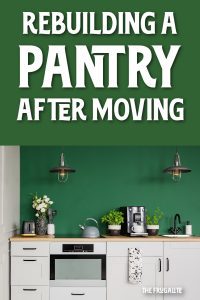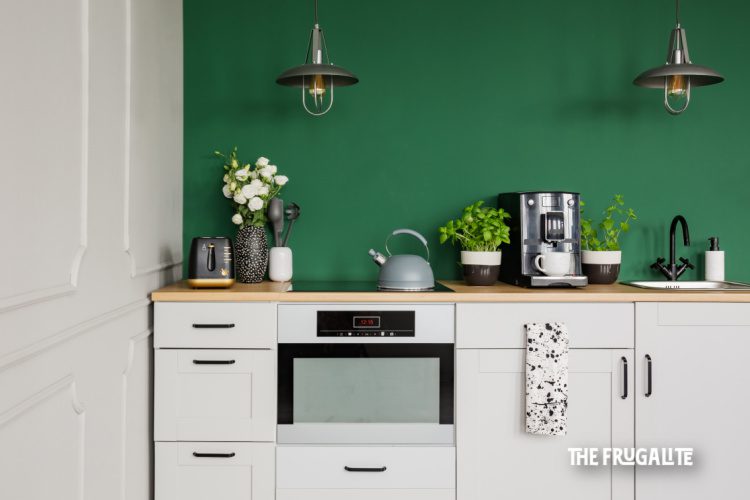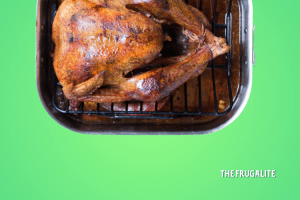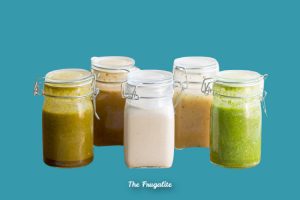(Psst: The FTC wants me to remind you that this website contains affiliate links. That means if you make a purchase from a link you click on, I might receive a small commission. This does not increase the price you’ll pay for that item nor does it decrease the awesomeness of the item. ~ Daisy)
As 2024 comes in, I’ve found myself in yet another hotel room, relocated for work. (Thankfully, this one is much better than the last.) There are many things I have to do now that I’ve arrived and one of those things is rebuilding my pantry after moving.
At the end of December, I found myself road-tripping it across the northwestern part of the United States, making my way to the Northern part of Vancouver Island, British Colombia, my new home. While the town I’m in is remote, which comes with its own set of complications, it’s a place I’m happy to have found. It is stunning!
The grocery situation
Being in a remote town, one of the biggest complications I face is getting my groceries. I’ve only been here two weeks, but since I
So, when I got here, I was starting from scratch. The other downside is that I once again find myself in a hotel room, and while it has a kitchenette, it only has a microwave, a single hot plate, and a standard bar fridge with very little freezer space. Thankfully, I also have the Instapot I got for Christmas. (Need more tips for cooking with a limited kitchen? Check out this article.)
To add just a little more fun to the mix, did I mention that groceries were an hour and a half away? While I can get some small things in town, most of it is much more expensive than a standard grocery store, and choices are very limited.
How I’m restarting my pantry after moving
When starting your stockpile from scratch, it can be overwhelming to get the things you need while also sticking to a budget.
Here are the things I’m focusing on first:
Shelf-stable protein:
With limited fridge space and barely any freezer space, I’m focusing on shelf-stable proteins that I enjoy eating. There’s no sense in getting something I won’t eat or don’t eat often.
What I have so far: Beans (black, pinto, refried, and baked), tuna, lentils, peanut butter, chickpeas, protein bars, nuts, and trail mix.
Meal building blocks:
These are things that can be filling, a large portion of my meals, and low cost. Typically very versatile foods.
What I have so far: Rice, a few types of regular noodles, rice noodles, quick oats, and potatoes.
Pantry Staples:
It’s crazy how just a little flavoring can completely transform a meal. There are just some staples that most people usually have on hand.
What I have so far: salt, pepper, common herbs and spices I use, flour, baking soda, sugar, pancake mix, cooking oil, white vinegar, apple cider vinegar, and coffee.
Produce that lasts
While having a good variety of shelf-stable food is important, I honestly love my fruits and vegetables so much. A big focus of mine going forward will be to see just how long I can extend the shelf life of produce. (Don’t worry – as I learn, I’ll make sure to share!)
For now, I’m limiting the produce I buy so I can waste less and have items that will last longer.
What I have so far: Here’s what I’ve gotten in the first couple of weeks.
- Cabbage: I love how versatile cabbage is, both cooked and raw, I love it as a vegetable, and when kept in a cool dark place (a.k.a. the fridge), it can last a pretty long time.
- Carrots
- Potatoes
- Apples
- Tomatoes: I’ve been keeping them in the fridge and purposely bought half that were still a little green so some would last a couple of weeks and some I could eat in my first week.
- Bananas: I followed the same premise as the apples and got some a little green. As they get more ripe, I love to put them in smoothies, oatmeal, and even in my pancakes.
Other perishables I’m keeping on hand
While most things I’m buying for the foreseeable future, I’m buying with the intention of lasting a while, there are other things that I buy that just bring me joy. Things that, while not essential, do make my meals (or coffee) taste better.
While it’s great to have a budget and keep things low-cost, it’s also important to enjoy what you eat.
Here are some other things, perishables or otherwise, that I have on hand:
- Cream
- Butter
- Bread
- Cheese and crackers
- Tortillas or Naan bread
- Hummus
- Condiments (mayo, mustard, ketchup, hot sauce, and BBQ sauce)
- Lime juice
- Chocolate
The plan moving forward
Moving forward, while still in a small space for the foreseeable future, my options are a little limited.
Ideally, I’ll be getting a small chest freezer in the next month so I can start buying some more meat. I almost exclusively buy on-sale or last-day-of-sale meat, which usually means it needs to be eaten or put in the freezer right away. It’ll also enable me to buy more bread and frozen vegetables (which I prefer to the canned variety.) All of this will let me space out my shopping trips even further.
I’m also hoping to grocery shop no more than once every 2-3 weeks. With a 3-hour round trip to town, plus the time of the shopping itself, it just makes sense to go less often. From past experience, both mine and Daisy’s, when you grocery shop less often, it usually helps to lower your grocery bills.
What do you focus on when restarting your pantry after moving?
Building or re-building a stockpile, especially when starting from zero, can seem like a lot, but it doesn’t have to be.
Coming into the situation with a plan and a system can make all the difference. Make a list, start with the foods you eat on a regular basis, and add as needed or as you can.
When you’re working on building your pantry after moving, what do you focus on first? Have you ever had to start from scratch? What are the first things you like to add to your stockpile? Is there something you forgot but needed most?
Let’s discuss this in the comments!
About Chloe Morgan
Chloe Morgan grew up living with a tight budget. In her late teens and early 20’s, all the lessons she’d learned started to slip, like it does for many college-age students on their own for the first time with their first credit card. As she’s gotten older, she’s started to deal with the repercussions and has taken on a frugal way of living, keeping her costs low, as she pays off debt and saves for her future. Chloe lives in Northern Ontario, Canada, with her dog, Rhea.
Check out her work on TheOrganicPrepper.com and TheFrugalite.com where she writes about food, frugality, finances, and self-reliance, or her work on Medium, where she writes about lifestyle, mental health, and writing.











3 thoughts on “Rebuilding a Pantry After Moving”
My late husband and I moved from a house to a much smaller condo to be closer to family. My stockpile of food went to a food pantry that I had donated to before. As we settled in I started a new pantry with dry beans, split peas, lentils, spices, flour, sugar, canned and frozen vegetables, and canned soup. Most of these I was able to buy fairly cheaply by watching for sales. I was surprised to find many of these products on sale at various ethnic groceries. There had not been any of these stores in my previous location so it was a good thing to find. For two years I was able to source fresh fruits and vegetables from a CSA which often included one or two canned items. COVID put an end to that as they could not find employees to pack boxes—customers had to go to their location. I only make a trip about every six weeks and get things that keep well—potatoes, onions, carrots, etc. I watch ads and also look for things that have been marked down for quick sale—some of these can be frozen for later use or used in the next few days.
Save money by busying a used bread machine (many barely used in thrift stores) and make all your buns, bread etc. Will save you lots of money and you can use that to stock your pantry.
If I were making a cross-country move … my strategy would be a little different. I’ve accumulated a lot more “stuff” than just groceries … while some of my groceries are frozen but the majority rest are just storable. I would consider donating the frozen items but using the trailer hitch on my vehicle to haul a rental (or purchased) cargo trailer to handle the storable groceries plus way more “stuff” than just my vehicle could carry. If I didn’t already have that trailer hitch I would get one bought and installed while making sure I learned what the trailer load weight capacity limit of that hitch with my vehicle could handle.
As is, I’ve used my existing trailer hitch plus a utility trailer to handle various flea market and specialty sale shopping matters as well as some craigslist sales completed in various public locations. So having that trailer hitch installed many years ago has been well worthwhile for a long time. If I were making a cross-country move I would consider trading my open top utility trailer for a closed lockable cargo trailer (or building a closed top modification to mine) for not only the move but for many other purposes down through the years.
–Lewis